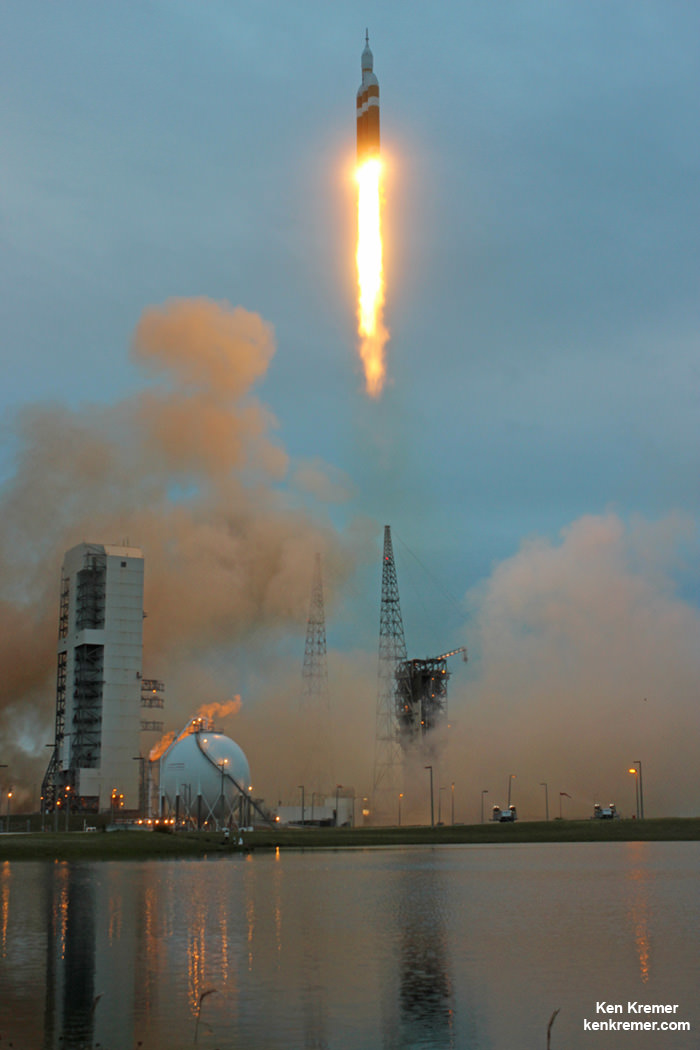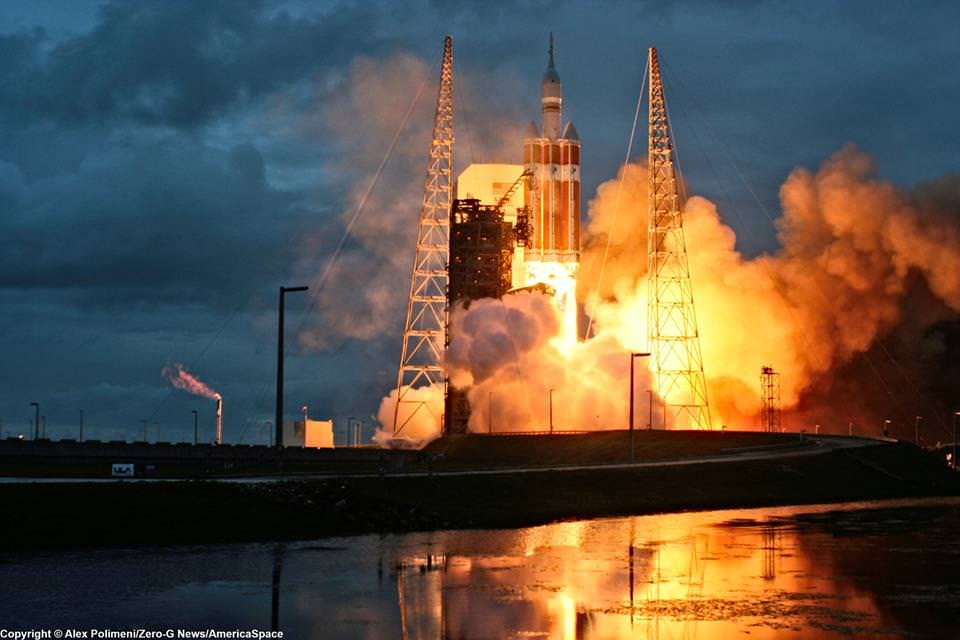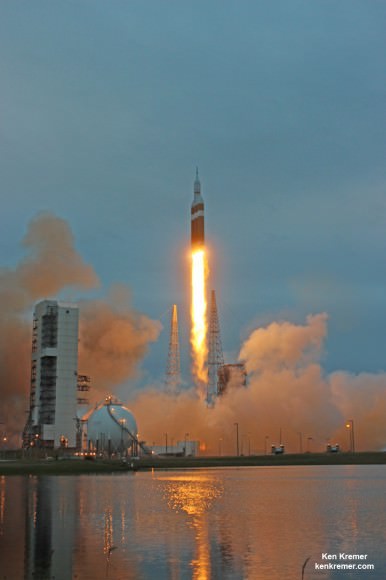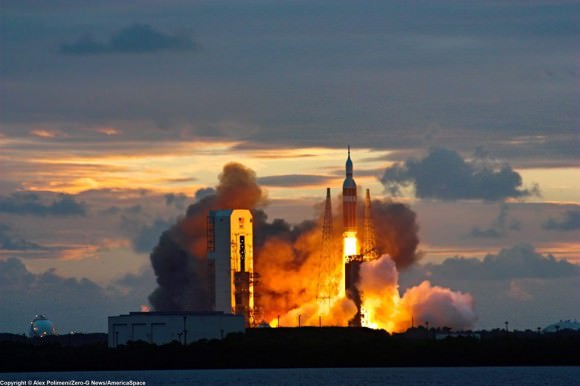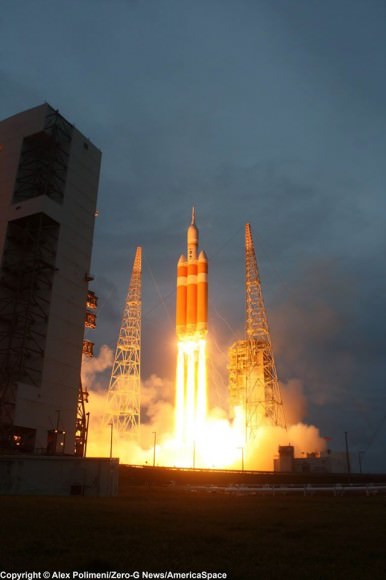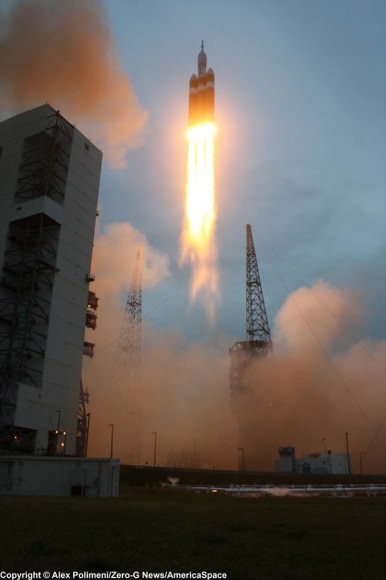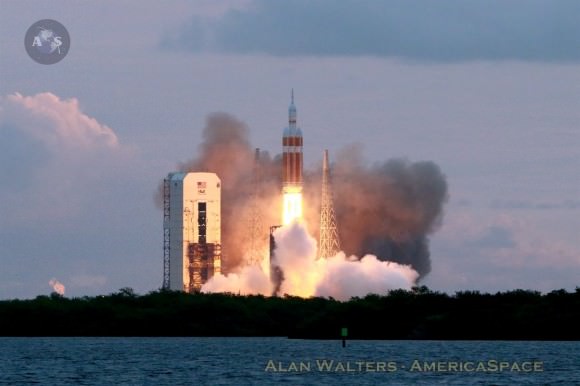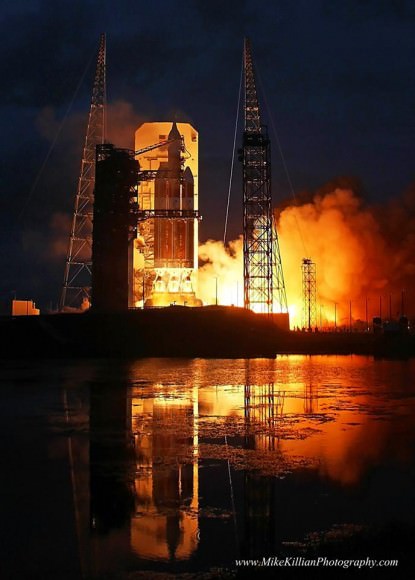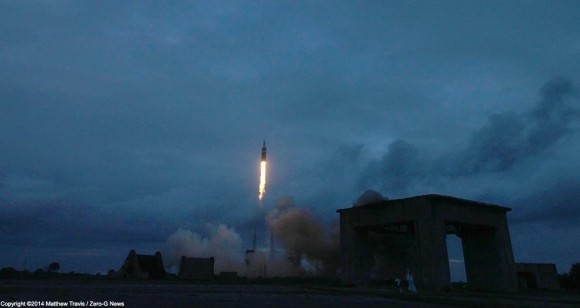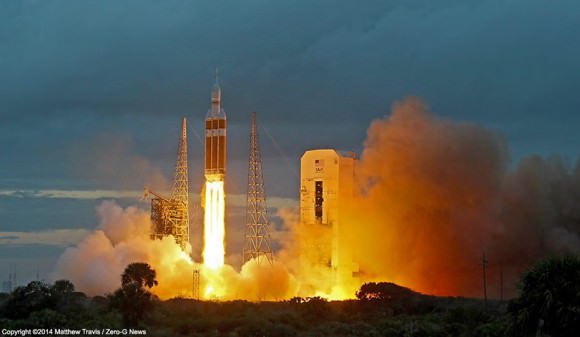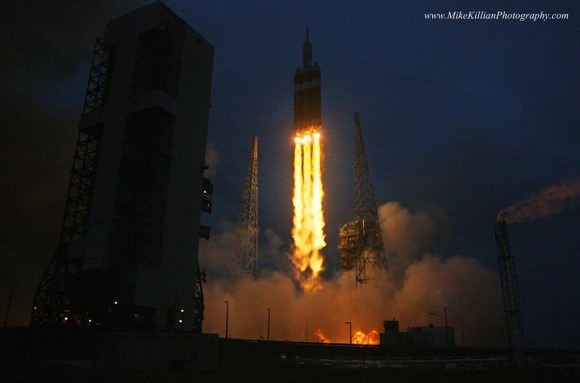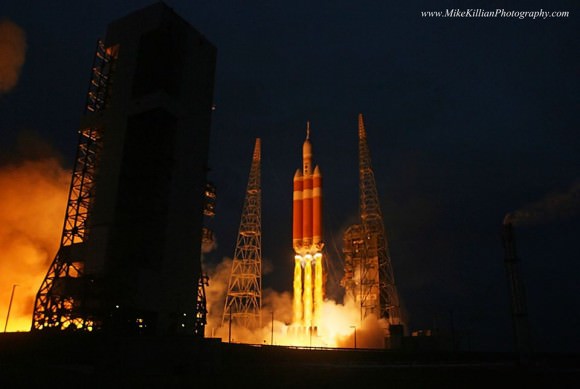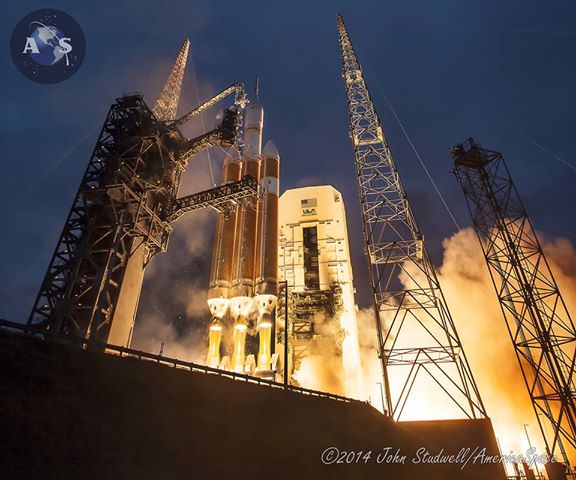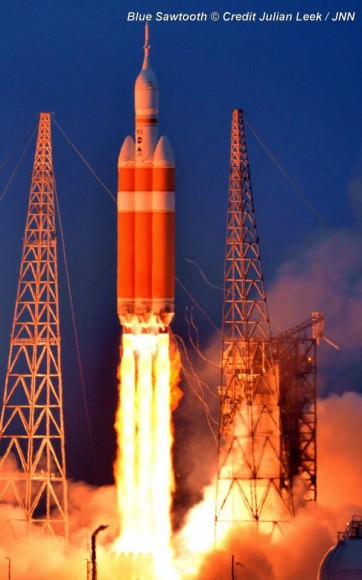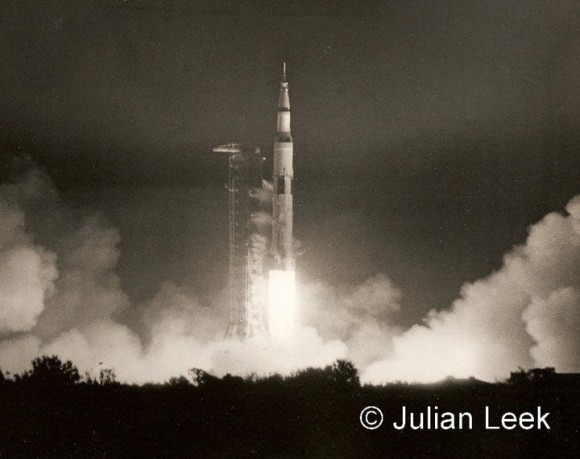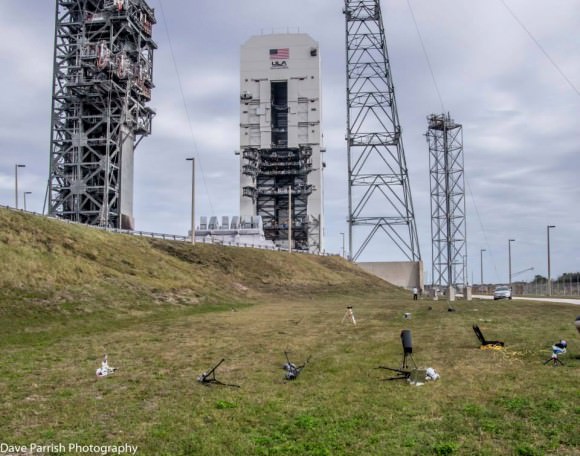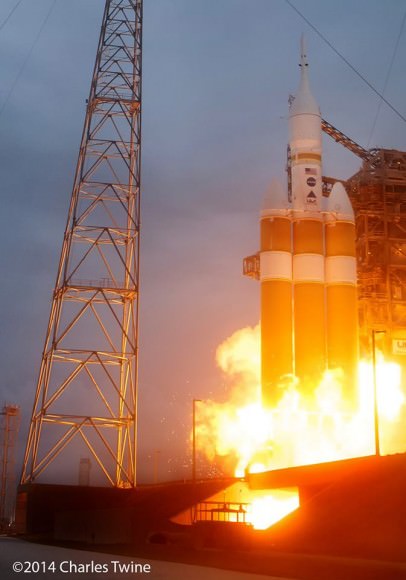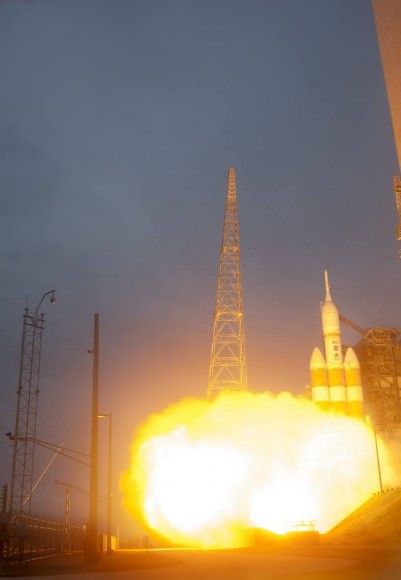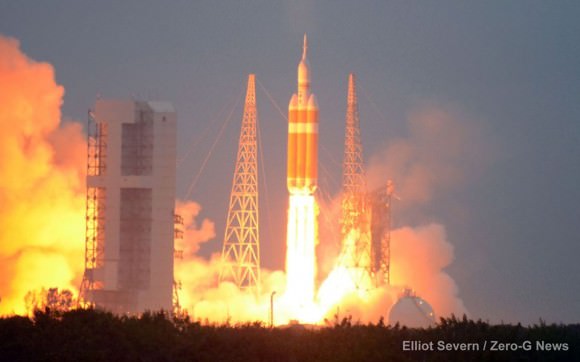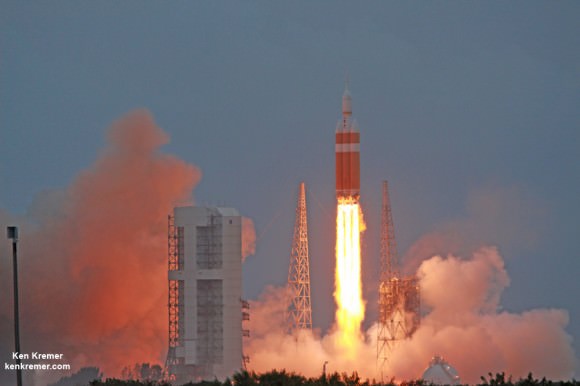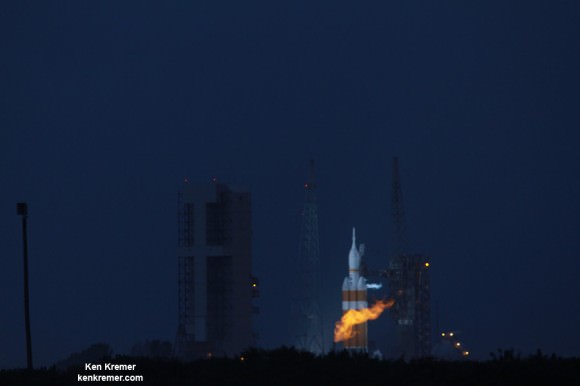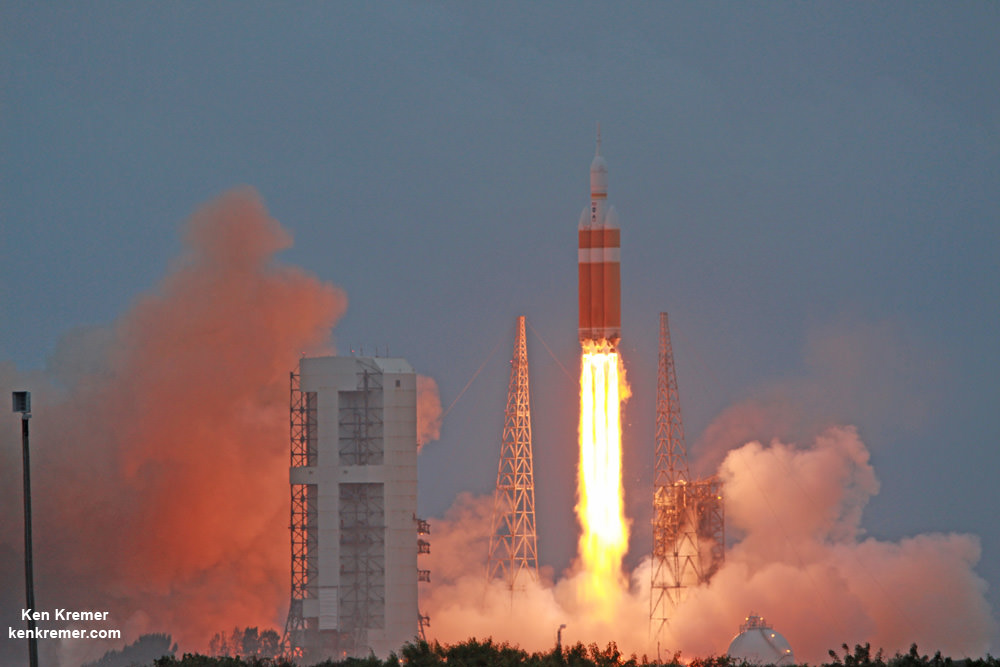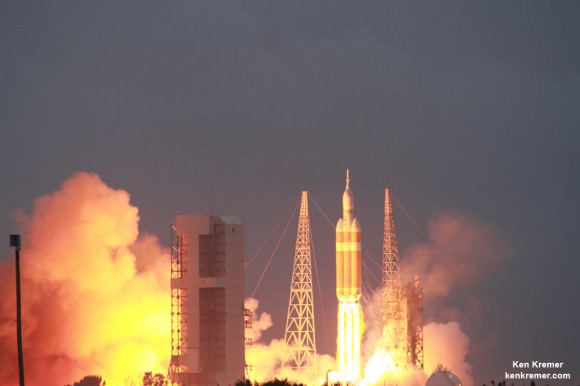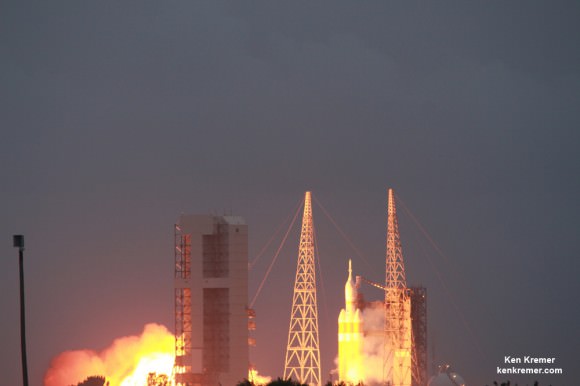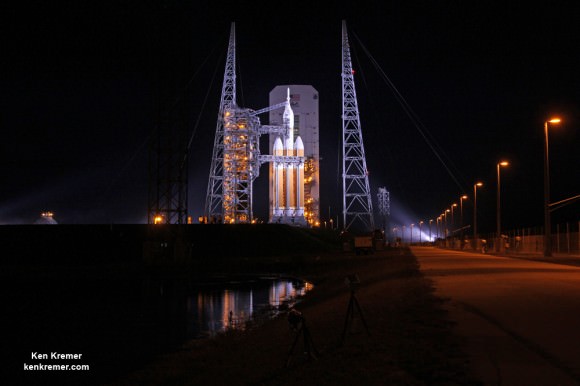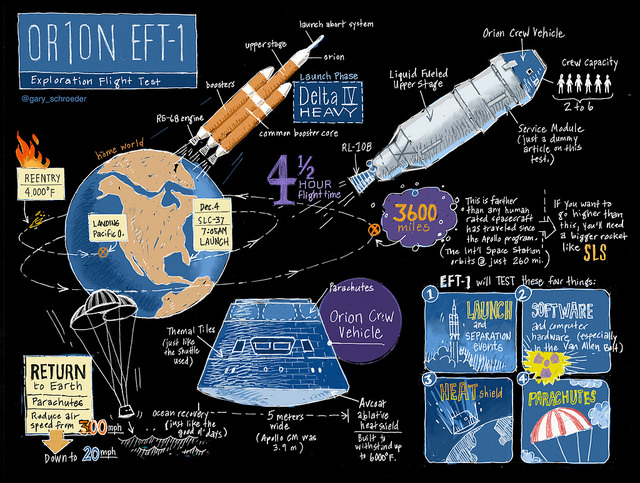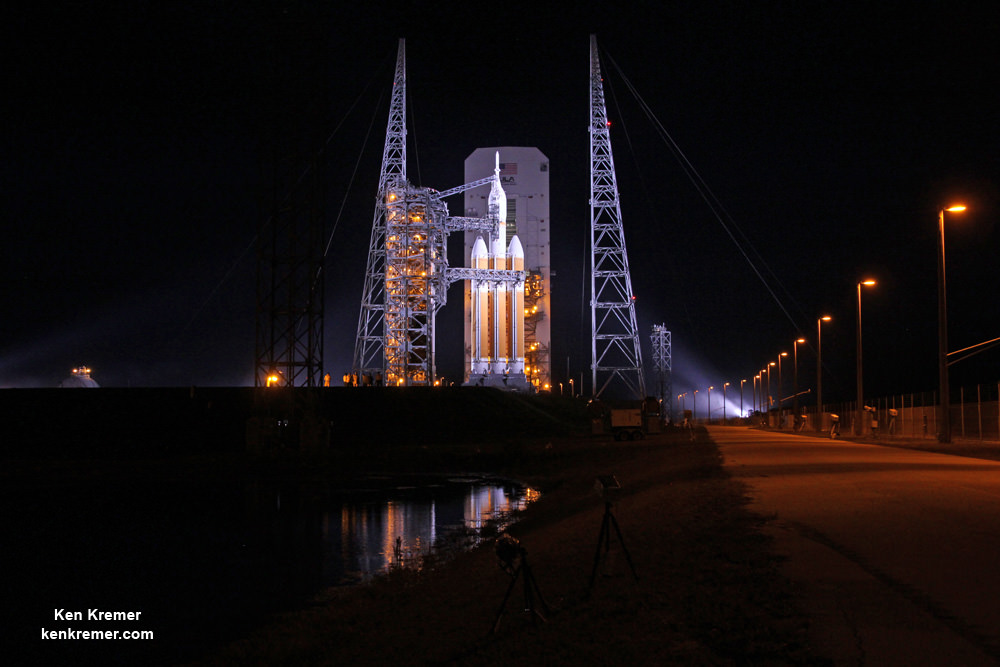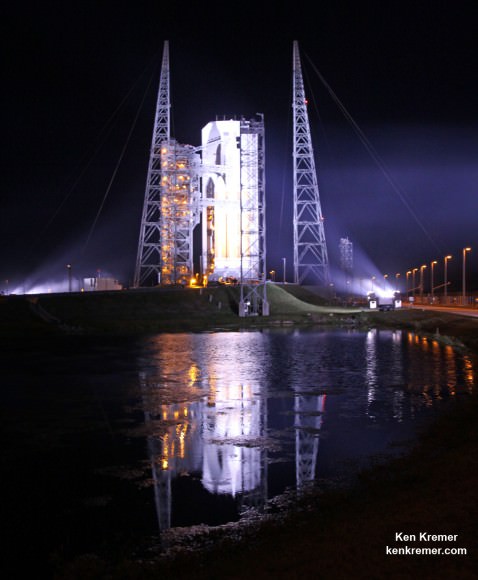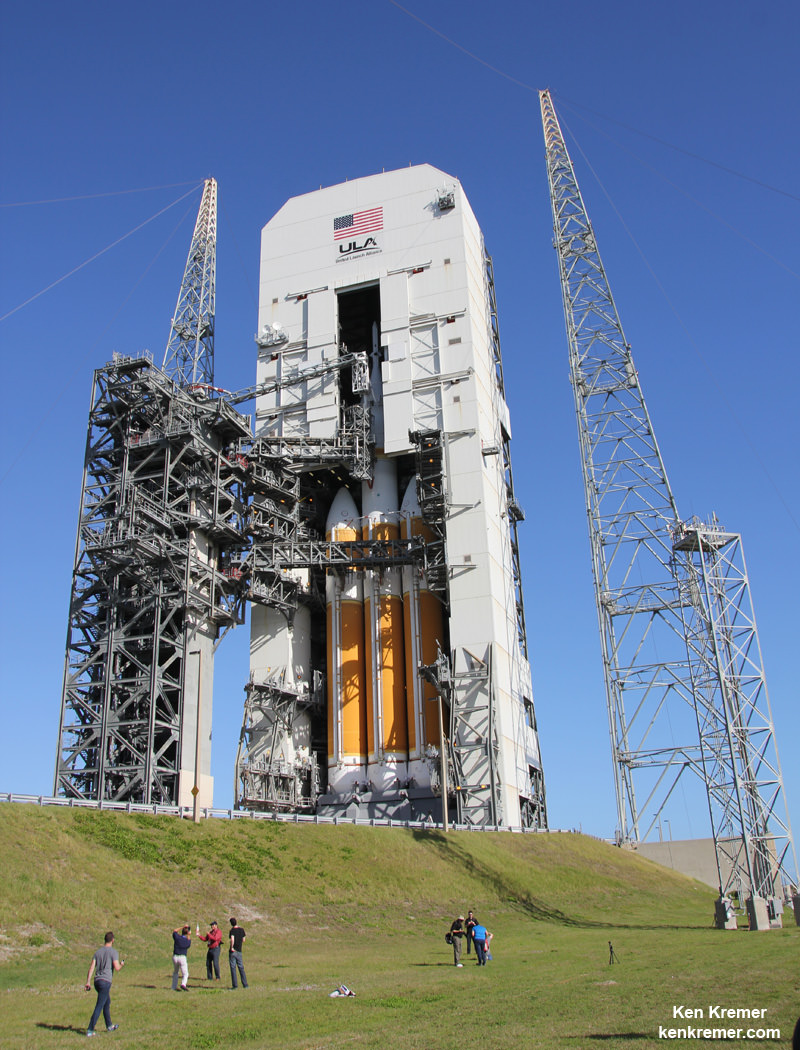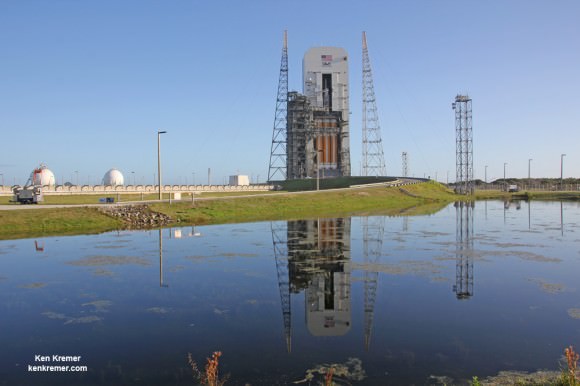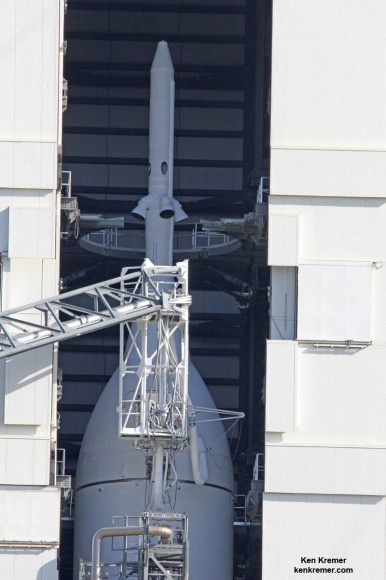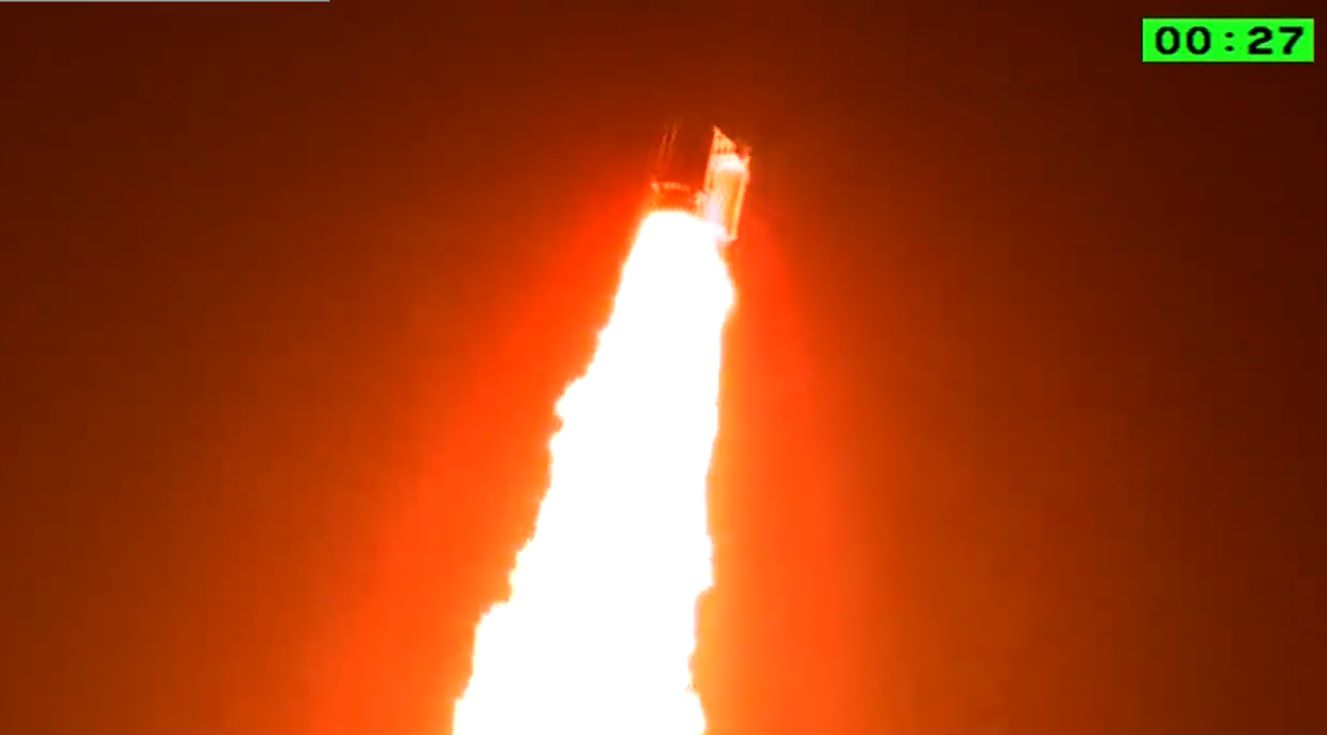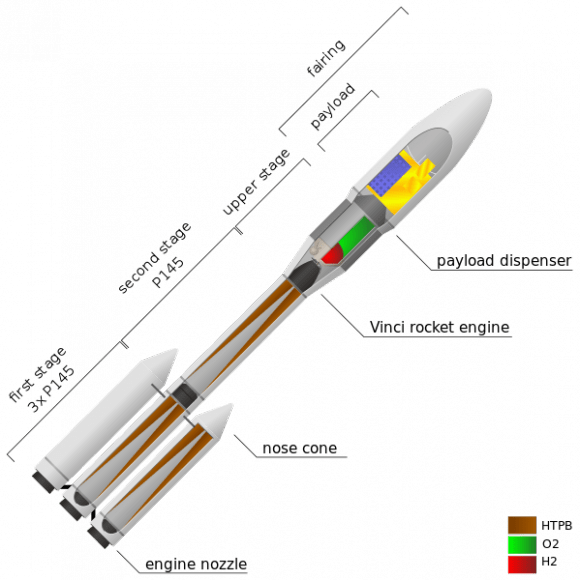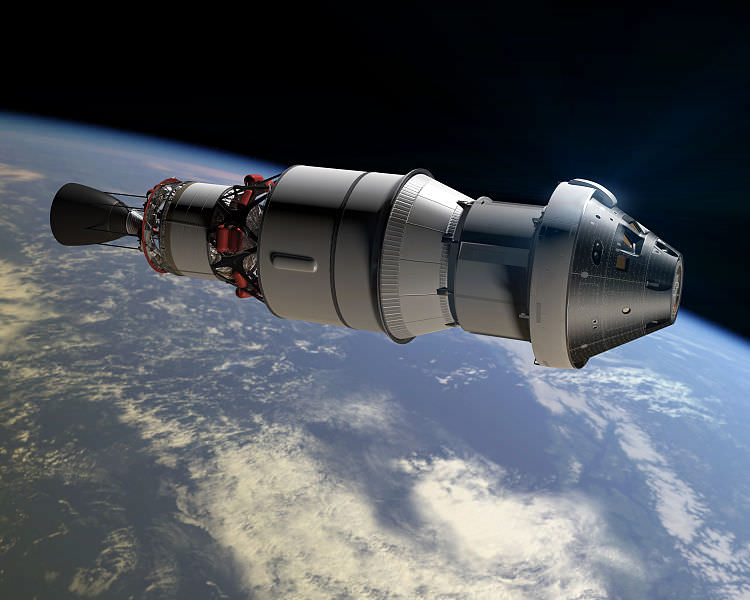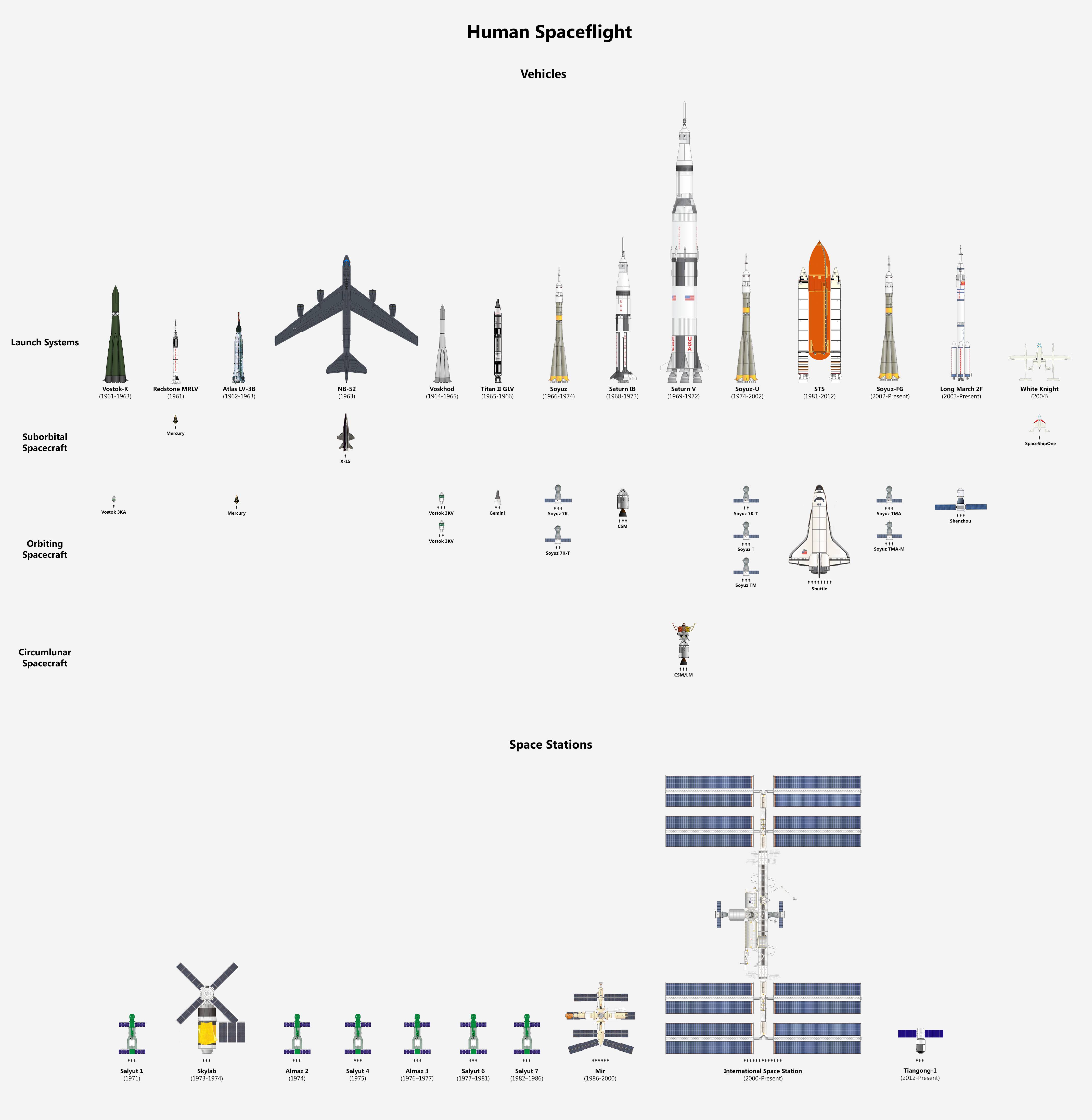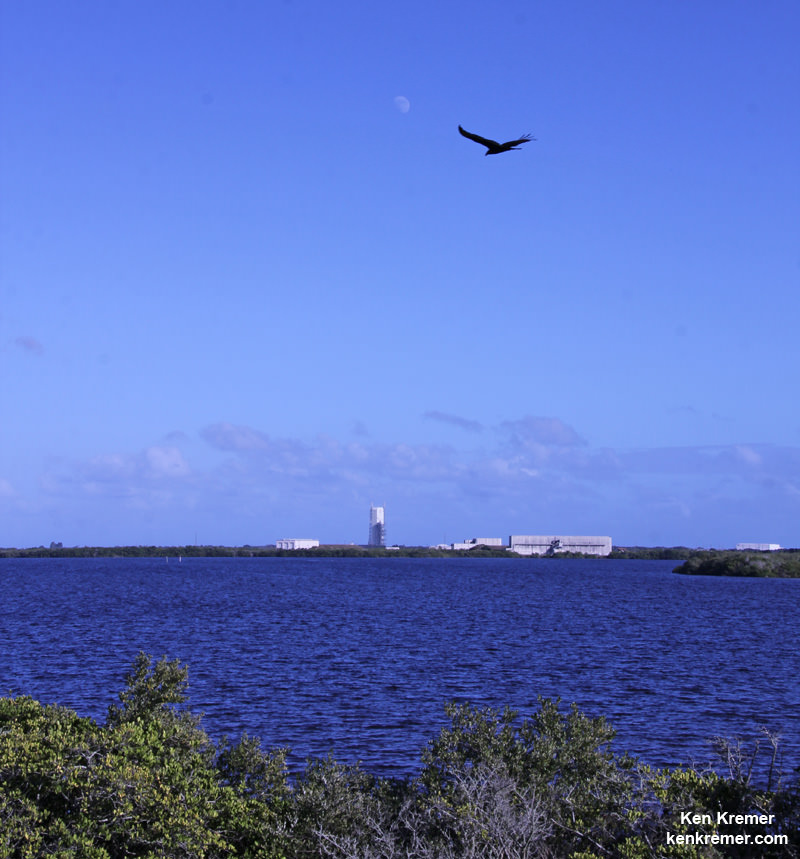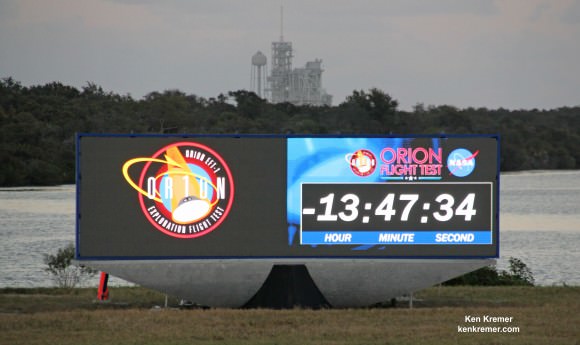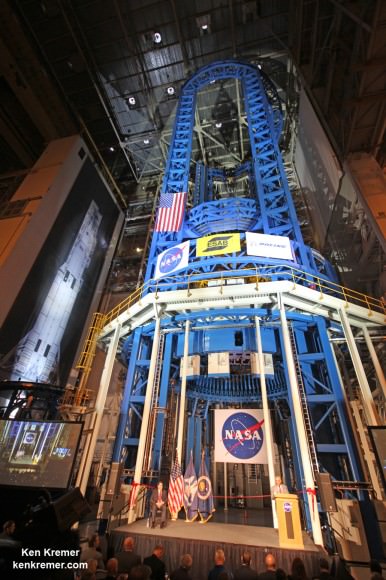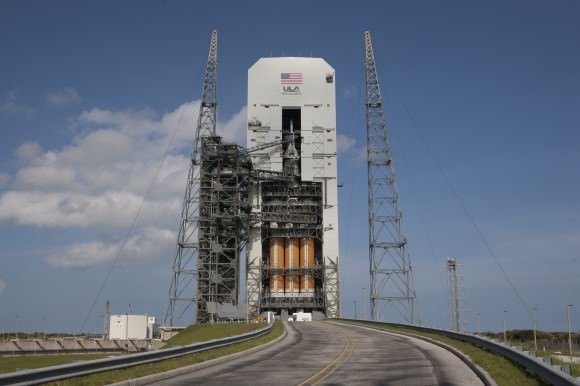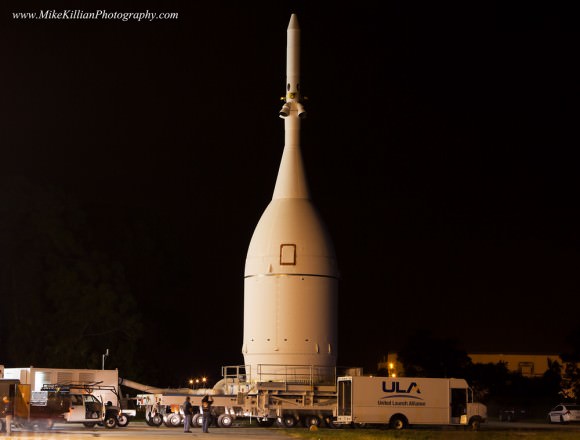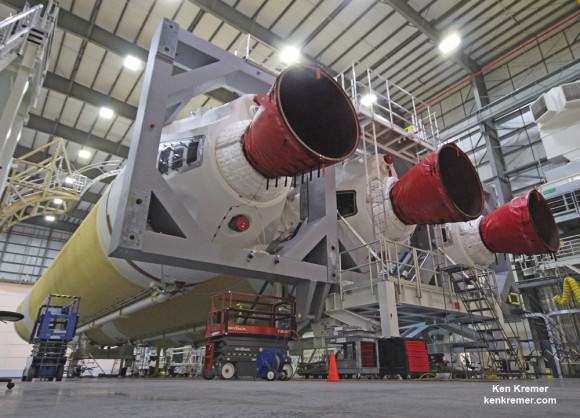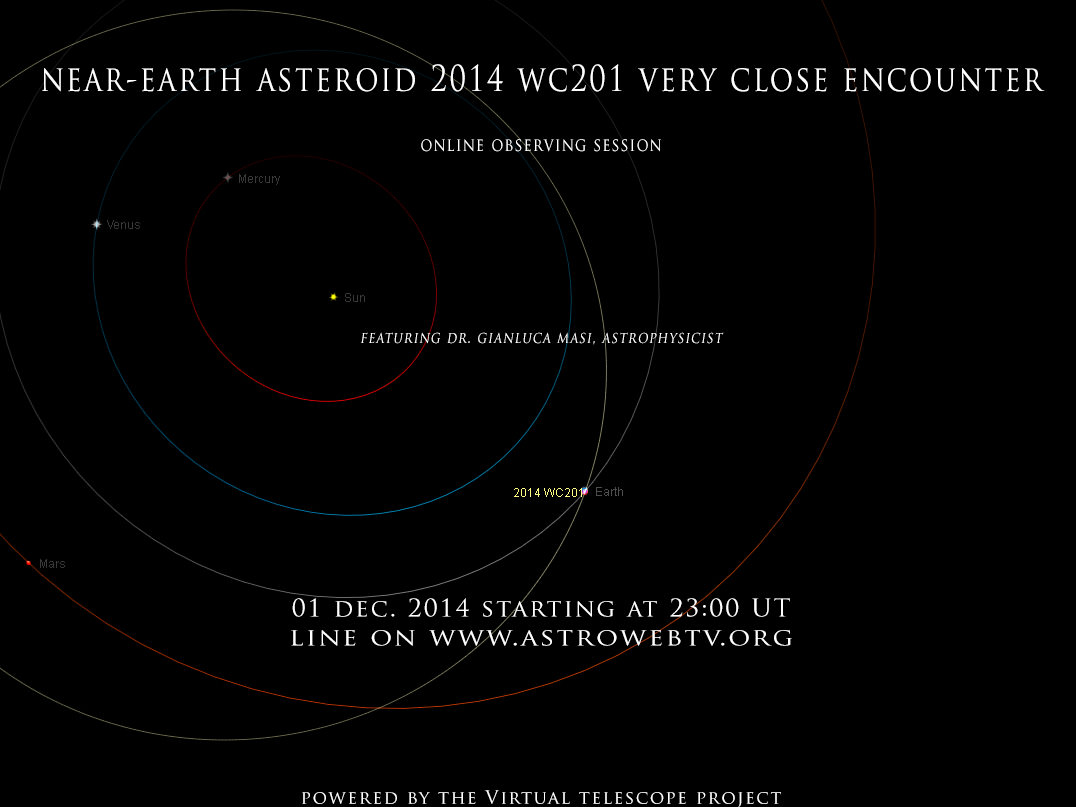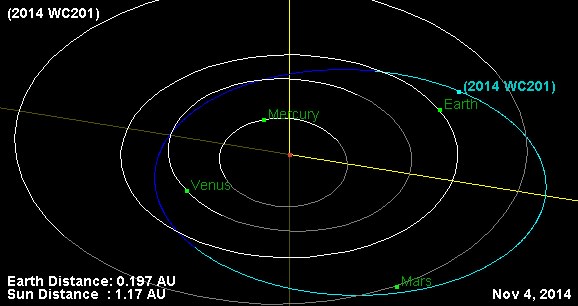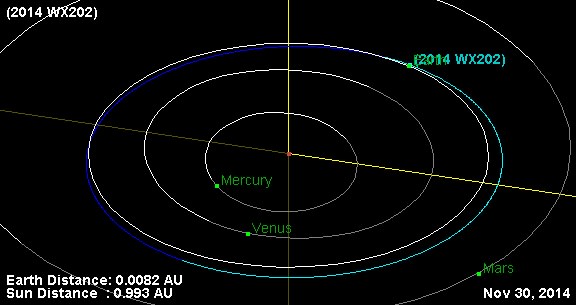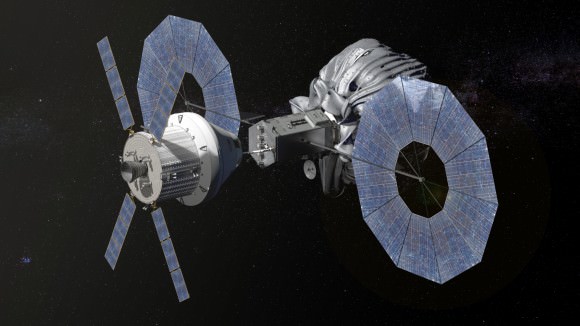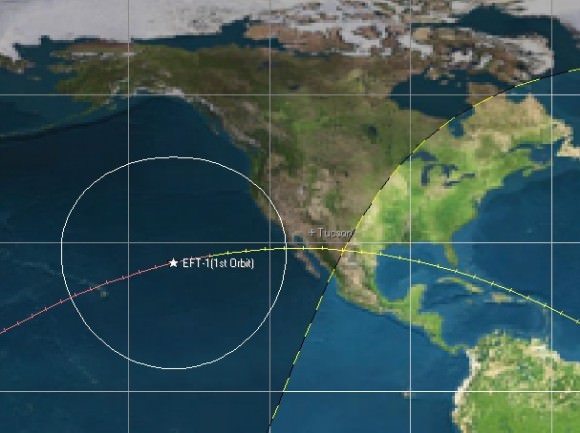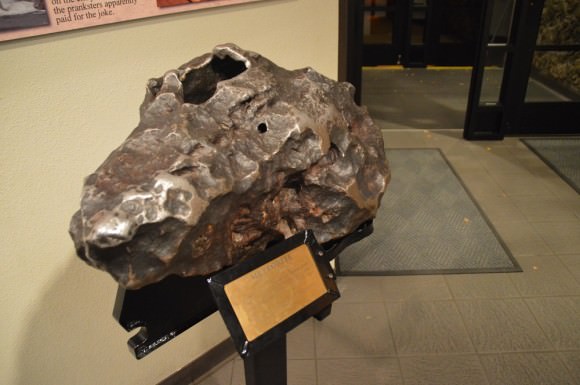KENNEDY SPACE CENTER, FL – NASA’s exploration roadmap aimed at sending Humans to Mars in the 2030s got off the ground magnificently with the flawless launch and landing of the agency’s new Orion deep space capsule on its maiden voyage to space on Friday, Dec. 5, 2014.
“The first look looks really good from a data standpoint and will help us as we go forward,” said Bill Gerstenmaier, NASA’s associate administrator for the Human Exploration and Operations Directorate, at the post Orion landing media briefing at the Kennedy Space Center (KSC).
“We, as a species, are meant to press humanity further into the solar system and this is a first step. What a tremendous team effort.”
Orion roared to orbit atop the fiery fury of a 242 foot tall United Launch Alliance Delta IV Heavy rocket – the world’s most powerful booster – at 7:05 a.m. EST from Space Launch Complex 37 (SLC-37) at Cape Canaveral Air Force Station in Florida.
The unpiloted test flight of Orion on the Exploration Flight Test-1 (EFT-1) mission carried the capsule farther away from Earth than any spacecraft designed for astronauts has traveled in more than four decades.
Humans have not ventured beyond low Earth orbit since the launch of Apollo 17 on NASA’s final moon landing mission on Dec. 7, 1972.
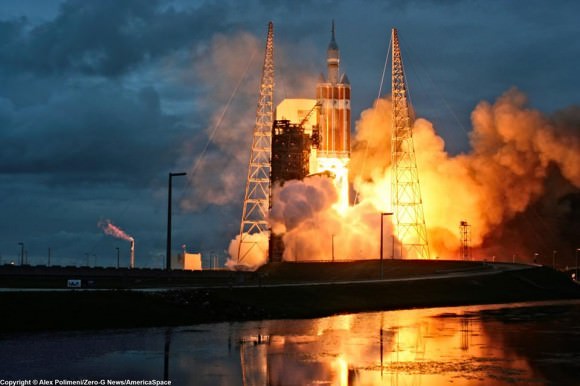
The first stage of the mammoth, triple barreled Delta IV Heavy generates some two million pounds of liftoff thrust and was the only rocket powerful enough to launch Orion and achieve its intended goals.
During the two orbit, 4.5 hour flight, Orion reached an altitude of 3,604 miles above Earth, about 15 times higher than the International Space Station (ISS).
The Delta rocket’s main stage and upper stage performed so well that Orion was injected into orbit within an accuracy of about 1 foot of the planned orbit, said Larry Price, Lockheed Martin Deputy Orion Program Manager in an interview with Universe Today.
“It’s phenomenal,” Price told me. NASA selected Lockheed Martin a decade ago as the prime contractor to design and build Orion.
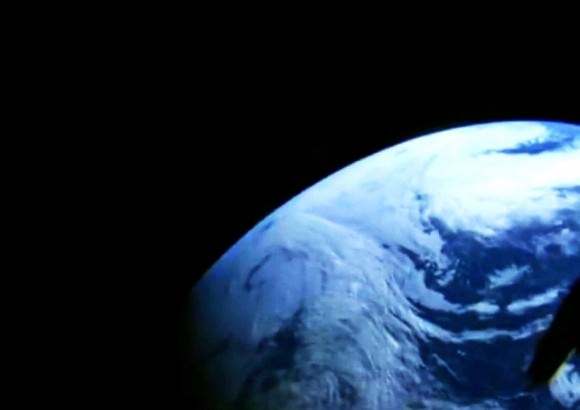
Orion was assembled, integrated, and tested inside the Neil Armstrong Operations & Checkout Facility at KSC.
“Lockheed Martin did a tremendous job of getting Orion ready,” noted Gerstenmaier.
“Thanks to everyone for getting us to be the leader in space.”
The EFT-1 mission concluded with a successful parachute-assisted splashdown of the Orion crew module in the Pacific Ocean, 600 miles southwest of San Diego.
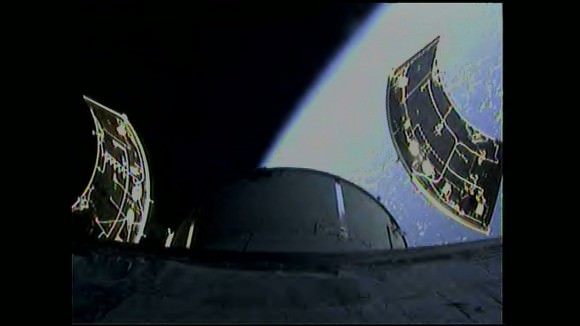
“It was a difficult mission,” said Mark Geyer, NASA’s Orion program manager at the KSC briefing. It appears to have been nearly flawless.”
“It is hard to have a better day than today, The upper stage put us right where we needed to be.”
“Today’s flight test of Orion is a huge step for NASA and a really critical part of our work to pioneer deep space on our Journey to Mars,” said NASA Administrator Charles Bolden.
“The teams did a tremendous job putting Orion through its paces in the real environment it will endure as we push the boundary of human exploration in the coming years.”
The spacecraft was loaded with over 1200 sensors to collect critical performance data on numerous systems throughout the mission for evaluation by engineers.
EFT-1 tested the rocket, second stage, and jettison mechanisms, as well as avionics, attitude control, computers, environmental controls, and electronic systems inside the Orion spacecraft and ocean recovery operations.
It also tested the effects of intense radiation by traveling twice through the Van Allen radiation belt.
Approximately 3 hours and 20 minutes into the mission, the spacecraft separated and soon experienced the highest radiation levels of the mission.
At about 4 hours and 15 minutes, the capsule began its high speed re-entry through the atmosphere at speeds approaching 20,000 mph, thereby testing the 16.5-foot-wide heat shield at speeds approximating 85% of the reentry velocity for astronauts returning from voyages to the Red Planet.
The capsule survived scorching temperatures near 4,000 degrees Fahrenheit in a successful test of the heat shield and thermal protection tiles, before splashing down on a trio of parachutes in the Pacific Ocean at 11:29 a.m. EST.
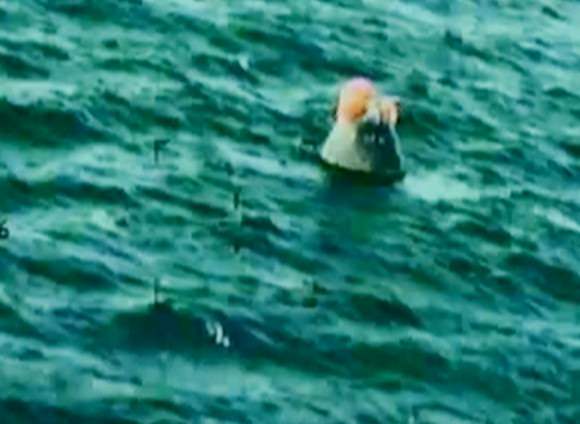
The purpose was to check out many, but not all, of the systems critical to the safety of astronauts who will eventually travel to deep space in Orion.
“When Orion started there were still a lot of Apollo veterans. Now we have finally done something for our generation,” said Mike Hawes, Lockheed Martin Orion Program manager.
Onboard cameras captured stunning views during many stages of the EFT-1 mission, including the fairing jettison and views out the window.
“Some of those pictures where you could see the frame of the window, you don’t feel like you’re watching like a satellite, you feel like an astronaut yourself,” Geyer said.
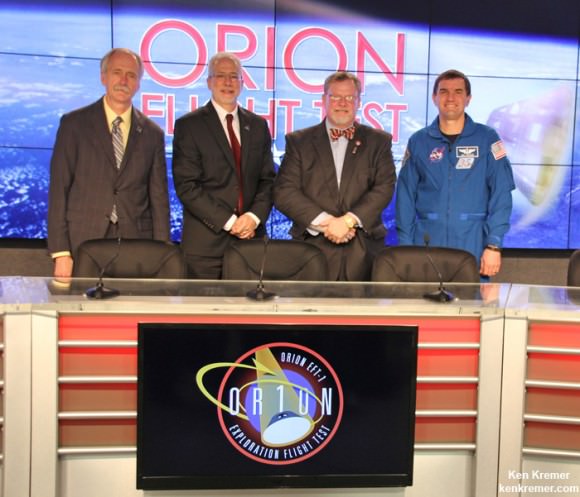
“That picture really meant something to me,” said astronaut Rex Walheim, who flew on the final space shuttle mission on STS-135.
A drone captured stunning images of Orion during the final plummet to Earth and parachute deployment.
The pace of the Orion program is constrained by budgets and is slower than anyone wishes.
The next Orion launch on the EM-1 mission is slated for the second half of 2018 and will also be unmanned during the debut launch of NASA’s powerful new SLS rocket.
America’s astronauts flying aboard Orion will venture farther into deep space than ever before – beyond the Moon to Asteroids, Mars, and other destinations in our Solar System starting around 2020 or 2021 on Orion’s first crewed flight atop NASA’s new monster rocket – the SLS – concurrently under development.
Watch for Ken’s ongoing Orion coverage from onsite at the Kennedy Space Center about the historic launch on Dec. 5.
Stay tuned here for Ken’s continuing Earth and planetary science and human spaceflight news.

